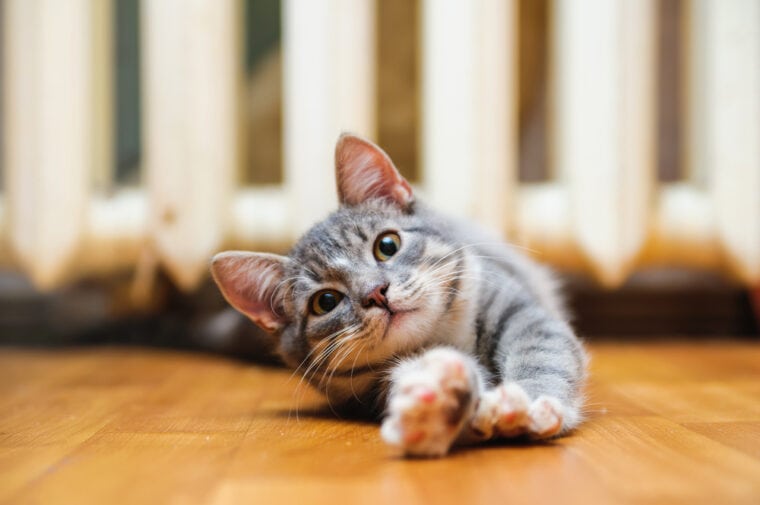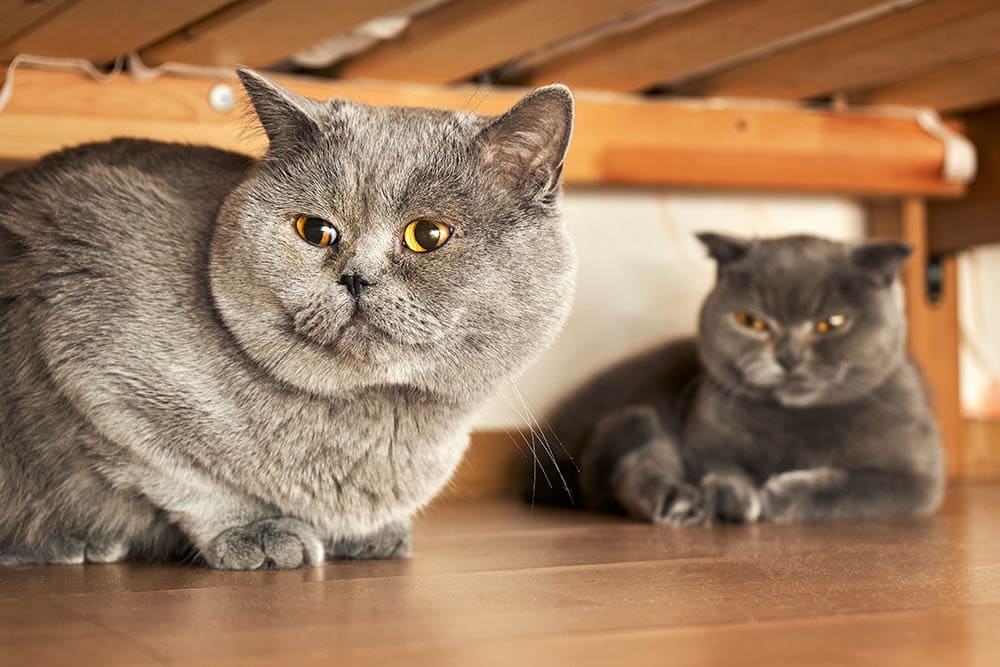
We love our cats for their character quirks, but only until their habits start wrecking the house. Cats come with a yen for scratching, and unfortunately, they’ll often satisfy their need to claw in the most undesirable places, like your furniture and carpet.
What’s causing your cat to paw and scratch at the flooring? It could involve one of several reasons, each entailing a unique solution. If your cat’s claws are starting to hurt the look and feel of your room, learn why your cat is scratching your floor and the simple fixes you can use to stop it.
Why Is My Cat Scratching the Floor?
1. They Have an Issue with the Litter Box

Bathroom breaks may be unceremonious, but for a cat, each toilet break involves a surprisingly complex set of actions before, during, and after elimination. In one way or another, scratching is part of that process. Individual traits, such as sex or neuter status, have some impact on the behavior. But much of a cat’s pawing and scratching around their box may indicate dissatisfaction with the environment.
Although they often still use the litter box, cats may behave oddly when the container or litter is undesirable or unclean. They may hesitate to enter the litter box, bang against it, balance on the edge, or scratch the walls and surfaces around it. Behavior changes, particularly urination outside the box, may also indicate underlying health issues to discuss with your vet.
How to Keep Your Cat from Scratching Around the Litter Box
If the signs point to your cat not liking the litter box, you can reduce the floor-scratching action by providing the ideal setting. Cats need every accommodation to fit their routine. Their business is a multi-step process. If they cannot be comfortable the entire time, they will deviate into off-beat and often destructive behaviors.
Your cat should have space to move, a comfortable substrate, and enough kitty litter to cover their waste. Use about 2 inches of litter, and test different brands to find the one your cat prefers. Ensure the box and surrounding area are roomy enough for your cat to walk, turn, and stretch.
Keep the litter clean and odor-free. Scoop clumps 1–2 times daily, topping off the litter after each cleaning. If needed, a product like Zero Odor can safely deodorize the box to make it more appealing to your cat.
2. They Need to Maintain Their Nails

Cats will still want to scratch even in the most enriched and comfortable environment. While it may increase due to stress or discomfort, scratching is a natural habit that cats must engage in to some extent for several reasons. In most instances, it’s instinctual and necessary to make them feel safe and prepared.
Scratching refreshes a cat’s claws by stripping away dead outer sheaths to reveal sharp new nails underneath. With regular scratching, nails stay efficient for predation. Attaching to a surface with their claws also helps cats stretch and exercise their muscles and joints. Although they’re out of their wild habitat, domesticated cats nevertheless retain the need for self-maintenance to prepare for hunting.
How to Stop Your Cat from Scratching the Floor
Scratching is such an ingrained instinct that it may be unreasonable to expect you can train it out of your cat entirely. The simpler, less aggravating, and more practical approach is redirection. If you can get your cats to use specific scratching apparatus, you’ll satisfy their needs while saving your flooring.
Science has shown that although cats have individual preferences, general types of scratching devices will often be more desirable than others. According to a 2016 study, ideal scratching posts are upright structures at least 3 feet tall with two or more levels. Rope is the top substrate, but cats also heavily favor cardboard.
Try different scratcher styles if one type of device doesn’t change the behavior. Some cats scratch furniture because of the material, so duplicating their preferred surface may successfully redirect them.
Deterrents such as double-sided tape may also come in handy to protect your furniture. Meanwhile, rubbing attractants like catnip or silver vine on scratching posts can draw your cat’s attention. Above all, rewarding your cat’s positive behavior rather than punishing bad behavior will improve your chances of stopping your cat from scratching the floor.
3. There Are Other Cats in the House

Cats may scratch the floor due to stress and anxiety or to mark their territory. In either case, the stimulus is often another cat in the house. Territory marking is a natural behavior many cats exhibit when they sense competition with another animal.
Scent glands in the cat’s foot pads leave a distinct odor where cats scratch. By scraping their nails across the floor, they’ll leave visible and odorous messages for other pets, giving themselves a sense of comfort and stability.
How to Reduce Scratching for Territory Marking
When a cat marks their territory through scratching, you can try to redirect their behavior with other devices. Cats often need security to decrease their urge to define their space. They may become more stressed if they feel their resources are at risk. Adding more litter boxes to reduce competition, for instance, could be one solution, but they may also need extra love, attention, and playtime.
Calming pheromone sprays may help reduce stress-related behaviors when all else fails. If your cat continues exhibiting signs of agitation, including scratching, talk with your vet for advice on pinpointing the cause and resolving the issue.
4. They’re Trying to Hide Their Food

Another instinct borrowed from their wild ancestors, cats digging around food bowls can cause scratches on your floor. Cats have a natural urge to hide food. Concealing leftovers covers their tracks and stops other animals from stealing their lunch.
Cats may cover their food in the home with materials like shredded paper after dining. While this often involves harmless pawing near their dish, they will sometimes scratch as they try to bury their food.
How to Prevent Scratching Damage Near the Food Bowl
You may have to take several steps to eliminate the reason and compulsion to scratch around the food dish while preventing floor damage. One of the most straightforward protections is a mat under the bowls that can absorb the abuse and spare your flooring.
To stop the scratching behavior entirely, remove leftover food the cat may try to cover. Don’t free-feed your cat, and remove the bowl as soon as they finish eating. If your cat starts to scratch, distract them with toys or playtime.
Conclusion
Cat scratching can be infuriating, especially on your expensive flooring. Patience is essential since cats only do what comes naturally, and there are always simple ways to resolve the issue. Reactionary punishment and declawing are not practical or humane solutions. By taking a second to understand why your cat is scratching the floor, you can find easy fixes to improve your feline friend’s quality of life and your relationship with them.
Featured Image Credit: mik ulyannikov, Shutterstock







